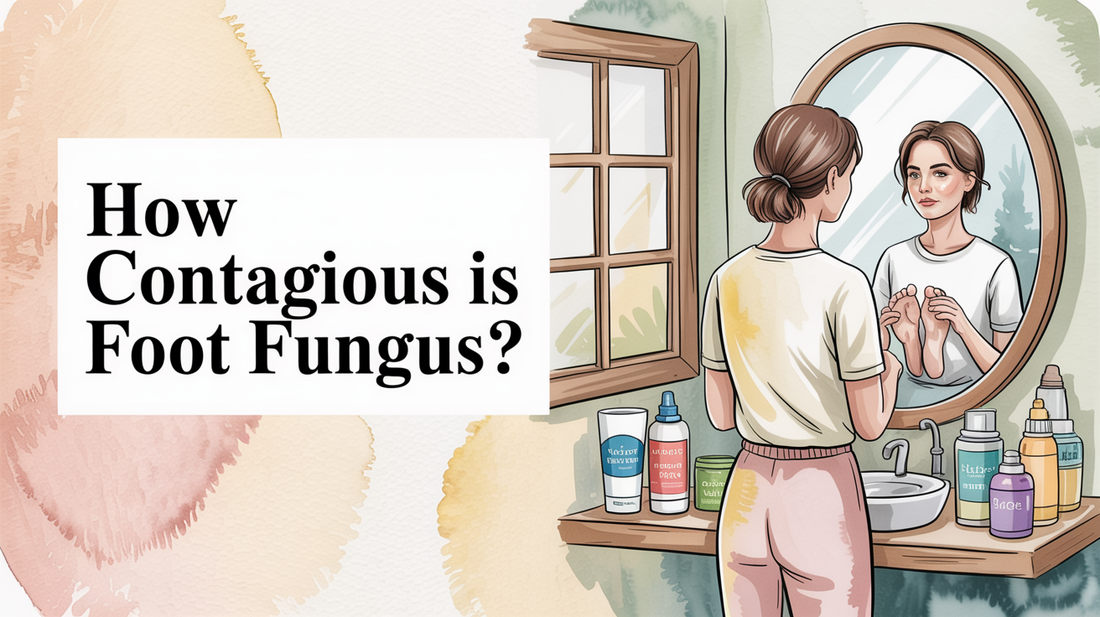How contagious is foot fungus?
fomite spread, transmission risk, family prevention — Foot fungus can easily spread through direct contact and contaminated surfaces, making it a concern for many families. Understanding how transmission occurs is key to prevention. This post is organized into three sections to help you take actionable steps tonight.
How It Spreads Person‑to‑Person 🧭
Foot fungus spreads easily from person to person, primarily through direct skin contact or via contaminated surfaces. The spores that cause athlete's foot can survive outside the body for a considerable time, increasing the risk of spreading within families.
Direct contact with infected feet or sharing items like socks and towels can lead to immediate transmission. Additionally, walking barefoot in places where infected individuals have been can further spread these spores, especially in warm and moist environments.
- Skin-to-skin contact can transmit fungal spores immediately.
- Sharing footwear, socks, or towels increases the transmission risk.
- Walking barefoot where infected individuals have been spreads spores through shed skin cells.
- Moisture and warmth enhance the likelihood of transmission.
- People with weakened immune systems may be more susceptible.
Try It Tonight: Calm, Fresh Feet ✨
- Wash feet with warm water and a mild cleanser; dry thoroughly between toes.
- Apply a small amount of Kissable Feet where needed; massage until absorbed.
- Let skin breathe; slip on breathable socks if desired. Patch-test first if you’re new to this foot cream.
High‑Risk Surfaces at Home & Gym ✨
Many surfaces in homes and gyms can harbor fungal spores for weeks or even months, creating ongoing risks for infection. Areas that retain moisture are especially susceptible to fungal growth and can contribute to transmission.
Bathroom floors, especially around showers and tubs, are prime spots for fungi to thrive. Locker rooms, pool decks, and communal showers often have high contamination rates, making it vital to be cautious.
- Bathroom floors, particularly around showers, retain moisture conducive to fungal survival.
- Gym locker rooms and communal showers are often heavily contaminated.
- Carpets in living areas can trap spores in their fibers.
- Shared exercise equipment and mats frequently carry infectious material.
- Wooden surfaces like sauna benches provide porous environments for fungi.
Why We Recommend a Gentle Helper 🌿
Kissable Feet is designed for quick absorption and offers a soothing, gentle feel. With its nurse-crafted blend of tea tree, coconut, and calendula, it’s a comfortable addition to your nightly routine.
- Fast-absorbing, non-greasy finish.
- Gentle on sensitive and overworked feet.
- Bedtime-friendly scent that’s clean and refreshing.
Protecting Your Household 🔍
To prevent the spread of foot fungus in your home, it's essential to practice consistent hygiene and implement environmental controls. Simple measures can drastically reduce the risk of infection among family members.
Regularly disinfecting bathroom floors and shower areas with antifungal cleaners is a good start. Avoid sharing personal items like towels and socks, and ensure that any items that come into contact with feet are washed in hot water and completely dried before reuse.
- Disinfect bathroom surfaces weekly with antifungal cleaners.
- Avoid sharing towels and socks to minimize transmission risks.
- Wash foot-contact items in hot water (140°F+) and dry thoroughly.
- Encourage infected family members to wear clean socks daily.
- Maintain low humidity and ensure proper ventilation in bathrooms.

